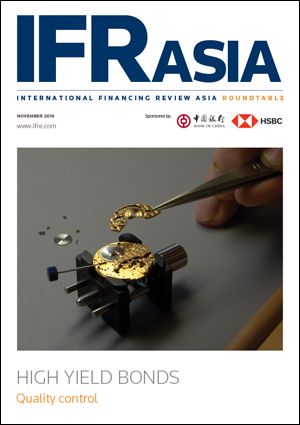Whenever an asset class sets a new record, people inevitably start to wonder whether a bubble is about to burst.
Asian high-yield issuance had its best year on record in 2019, fuelled by the global low interest rate environment and a hunt for yield. So far, however, there are no signs of overheating.
One of the main drivers of this year’s huge issuance volume was the massive refinancing requirement for Chinese property companies, and the amount of maturities next year is even higher.
China’s National Development and Reform Commission has taken pre-emptive measures to prevent unsuitable issuers from coming to the offshore bond market, which will limit supply from some sectors next year. While established issuers will find it easier to be granted quotas if they have imminent refinancing needs, lower-rated local government financing vehicles and debut issuers are likely to be shut out.
This kind of quality control from China is welcome, but it risks making it even harder for investors to diversify. Concentration risks are already a problem, since so much of Asia’s high-yield issuance comes from the Chinese property sector.
Investors can take part of the blame for this concentration. Fund managers have tended to favour property credits because data about the industry is very transparent.
Chinese LGFVs have filled some of the need for diversification, giving investors exposure to new parts of the country’s economy and infrastructure.
Issuers from the industrial sector, on the other hand, have to work harder to win over investors, and unexpected blow-ups around the region from credits in the textile and energy industries will not help.
At the same time, the investor base has broadened, with more international investors paying attention to the region and some viewing Asian high yield as a market in itself, rather than a subset of emerging markets credit.
Signs that investors are differentiating more between Asian high-yield credits are an encouraging signal that the market is maturing: even issuers in the same sector and with the same ratings can pay markedly different yields these days.
This divergence is rewarding issuers who have delivered on promises to deleverage and forcing others to rethink their reliance on debt-funded expansion.
The new NDRC guidelines, coupled with investors’ preference for issuers that manage their finances prudently, mean that the hunt for yield does not have to entail unreasonable risks.
To see the digital version of this roundtable, please click here
To purchase printed copies or a PDF of this report, please email gloria.balbastro@refinitiv.com

